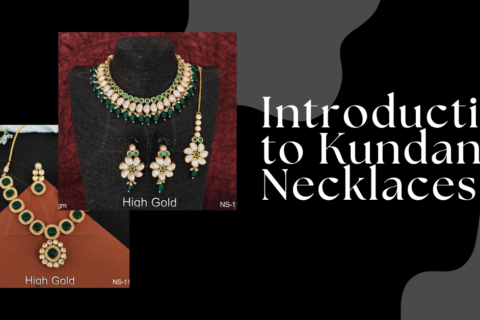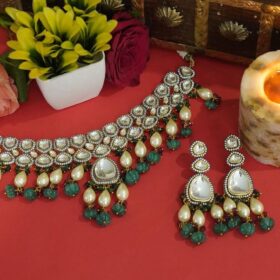Traditional Necklaces: A Journey Through Time and Culture

There’s something truly enchanting about traditional necklaces. These timeless pieces of jewelry are more than just accessories; they are embodiments of cultural heritage, artistry, and history. Traditional necklaces have been worn by people across the globe for centuries, each piece telling a unique story of the civilization it originated from. But what makes these necklaces so special? Let’s dive into their rich history and discover why they hold such a revered place in our hearts.
History of Traditional Necklaces
Necklaces have adorned humans since ancient times, with early examples dating back to prehistoric periods. Ancient Egyptians, for instance, were known for their elaborate necklaces made from gold and adorned with precious stones. These pieces often symbolized power and were worn by pharaohs and high-ranking officials. Over the centuries, necklaces evolved in style and craftsmanship, reflecting the cultural and artistic changes of each era. From the intricate designs of the Byzantine Empire to the ornate Victorian styles, traditional necklaces have continually evolved while preserving their cultural essence.
Types of Traditional Necklaces
Traditional Indian Necklaces
Kundan Necklaces
Kundan jewelry is a traditional form of Indian gemstone jewelry involving a gem set with gold foil between the stones and its mount. Originating from the royal courts of Rajasthan and Gujarat, these necklaces are known for their intricate craftsmanship and elaborate designs.
Polki Necklaces
Polki is uncut diamond jewelry that has a rustic, traditional appeal. These necklaces are often passed down as heirlooms and are cherished for their vintage charm.
Meenakari Necklaces
Meenakari is the art of enameling metals, a craft that dates back to the Mughal era. Meenakari necklaces are vibrant and colorful, featuring detailed enamel work.
Traditional African Necklaces
Beaded Necklaces
Beaded necklaces are a staple in African jewelry, often made with brightly colored beads arranged in intricate patterns. These necklaces are more than just adornments; they symbolize social status, community, and tribal identity.
Maasai Necklaces
The Maasai people of East Africa are famous for their elaborate beaded necklaces. Each necklace is handcrafted with meticulous attention to detail and holds cultural significance.
Traditional European Necklaces
Celtic Necklaces
Celtic jewelry is known for its symbolic designs and intricate knotwork. These necklaces often feature motifs like the Trinity knot, which holds deep spiritual meaning.
Victorian Necklaces
The Victorian era brought forth a variety of necklace styles, from lockets and cameos to intricate chains adorned with precious stones. These pieces are characterized by their romantic and ornate designs.
Materials Used in Traditional Necklaces
Traditional necklaces are crafted from a variety of materials, each adding to their unique appeal. Gold and silver are commonly used metals, valued for their durability and luster. Precious and semi-precious stones like diamonds, emeralds, rubies, and sapphires add a touch of elegance and color. Organic materials such as pearls, coral, and shells are also frequently used, especially in coastal cultures.
Craftsmanship and Techniques
The creation of traditional necklaces is an art form that requires exceptional skill and precision. Handcrafting methods have been passed down through generations, preserving the traditional techniques. From stone setting and metalwork to enamel painting and beading, each step in the creation process is meticulously executed to produce a masterpiece.
Cultural Significance of Traditional Necklaces
Traditional necklaces are deeply embedded in the cultural fabric of societies around the world. They often carry symbolic meanings, representing aspects such as fertility, protection, status, and spirituality. In many cultures, these necklaces play a vital role in rituals and ceremonies, marking significant life events such as weddings, births, and religious festivals.
Modern Influence and Adaptations
While traditional necklaces are rooted in history, their influence is evident in modern fashion. Designers today draw inspiration from traditional styles, blending them with contemporary elements to create unique, fusion jewelry. This modern adaptation ensures that traditional necklaces remain relevant and stylish.
Buying and Caring for Traditional Necklaces
When purchasing traditional necklaces, it’s essential to ensure their authenticity. Look for reputable jewelers who specialize in traditional jewelry and provide certificates of authenticity. Caring for these necklaces involves regular cleaning, proper storage, and avoiding exposure to harsh chemicals to maintain their beauty and longevity.
Conclusion
Traditional necklaces are more than just beautiful pieces of jewelry; they are a testament to the rich cultural heritage and artistry of various civilizations. Each necklace tells a story, connecting us to our past and enriching our present. As we continue to cherish and wear these timeless pieces, we preserve the legacy of our ancestors for future generations.




